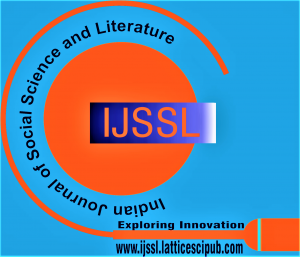How Disney Altered the Original ‘Sleeping Beauty’
Sigy George
Sigy George, Sr. Librarian, Delhi Public School, Vasant Kunj, Delhi, India.
Manuscript received on 31 August 2022 | Revised Manuscript received on 09 September 2022 | Manuscript Accepted on 15 December 2022 | Manuscript published on 30 December 2022 | PP: 1-6 | Volume-2 Issue-2, December 2022. | Retrieval Number: 100.1/ijssl.A1033092122 | DOI: 10.54105/ijssl.A1033.122222
Open Access | Ethics and Policies | Cite | Mendeley | Indexing and Abstracting
© The Authors. Published by Lattice Science Publication (LSP). This is an open-access article under the CC-BY-NC-ND license (http://creativecommons.org/licenses/by-nc-nd/4.0/)
Abstract: Fairy tales have been associated with story time at home, in schools and libraries, and bedtime reading rituals for a long time. From Hans Christian Anderson to Brothers Grimm, fairy tales have been part of every generation, and each child has their favorite. Disney’s version of fairy tales has become the accepted version among people. This variation of the famous classic fairy tales and alteration of the original tale to a white man’s tale of love and glory is called Disneyfication. The domination of Disney over these fairy tales has pushed the original lesser-known tales to the background. The old original tales have vintage and rich historical records, and it is sad to see that the Disney interpretation is what everyone remembers in reality. The fairy tales were first told orally to groups of peasants worldwide, and their true beginnings are unclear. The stories were likely first recorded in the 14th century (Zipes, 2001,[13]). The stories evolved from being a kind of amusement for uneducated peasants to being embraced by the middle classes and the nobility as more and more authors started to write their versions of the classics. Each time an author/s altered the fairy tales, it was to match the preferences and deliver what was acceptable. This paper examines one such fairy tale ‘Sleeping Beauty’ and how Disney has altered it. Disney’s adaptation of the fairy tale reflects the company’s domination and how it took over the general psyche of people. This paper seeks answers to the questions: Does Disney’s animated version of fairy tales change the perception of fairy tales like Sleeping Beauty? Is the influence of Disney so dominant that their version is more recognizable to people than the original stories?
Keywords: Fairy tales, Disney, Disneyfication, altered memory, folklore, story time, storytelling.
Scope of the Article: Uncovering Fairytales, Myth, Folktales, and Ghost Stories
